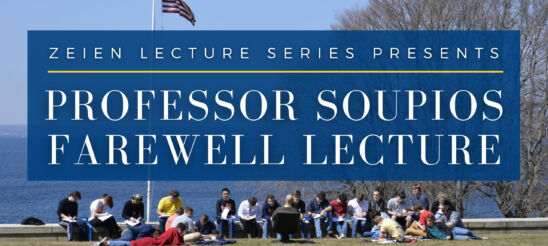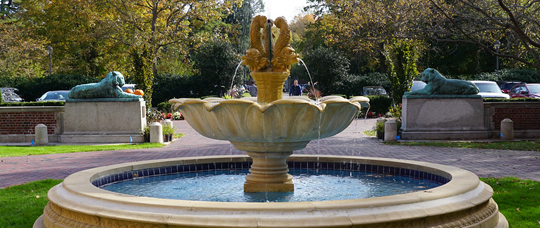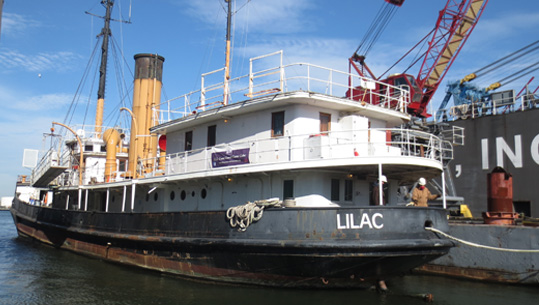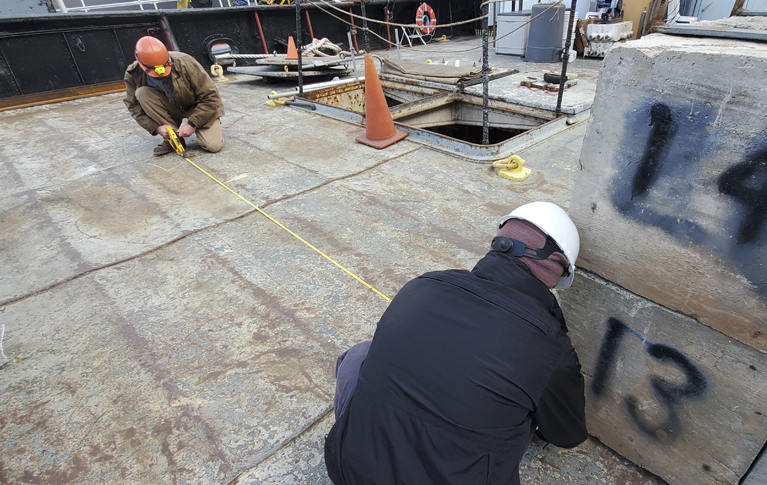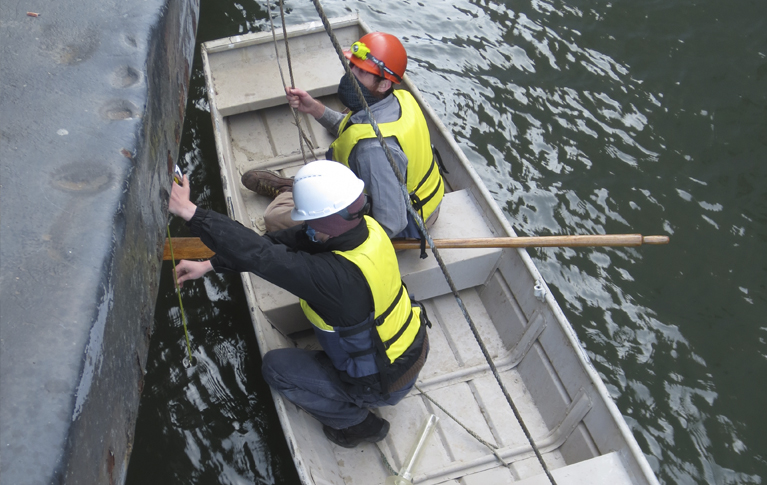Professor Soupios Farewell Lecture
PROFESSOR SOUPIOS RETIRING FROM WEBB
Late last semester Professor Michael Soupios announced that he would retire from Webb, effective as of the end of the fall semester. His teaching the freshman Introduction to Political Philosophy and the junior Development of American Government courses has been fundamental to the Humanities program at Webb for twenty-three years. No one who had him for these courses can forget his incredible breadth of knowledge, his clear and effective explanation of material—and his meeting classes in the Cuneo Courtyard or on the lawn behind Stevenson Taylor Hall.
Please enjoy his farewell Zeien Lecture that was presented to the Webb Community on March 18th, 2021:
ABOUT PROFESSOR SOUPIOS
Professor Soupios, Professor of Political Science at LIU, C. W. Post Campus, came to Webb as an adjunct professor in the spring of 1997 at which time he, remarkably, had four master’s degrees and three doctorates; in the time he has been at Webb, he completed yet another doctorate. During his “spare” time he has also managed to publish five books and numerous articles on ancient Greek thought and European political theory. On another note, students who have visited his home have seen his impressive copies of ancient Greek statues and, of course, his Galápagos Island tortoises.
Professor Soupios no longer runs 100-mile marathons, but he is now engaged in some serious mountain climbing. In 2019 he reached over 18,000 feet on Mount Everest; in 2020 he climbed to the top of Mount Kilimanjaro, the highest mountain in Africa; and in January this year, he climbed six mountains in the Andes, including Mount Ojos del Salado in Chile. His next scheduled climbs are Mount Maunakea in Hawaii this spring and Mount Fuji in Japan this summer.
Professor Soupios’ colleagues, former students, and the Webb family thank him for twenty-three years of teaching excellence at Webb Institute and wish him all the best in his further adventures.
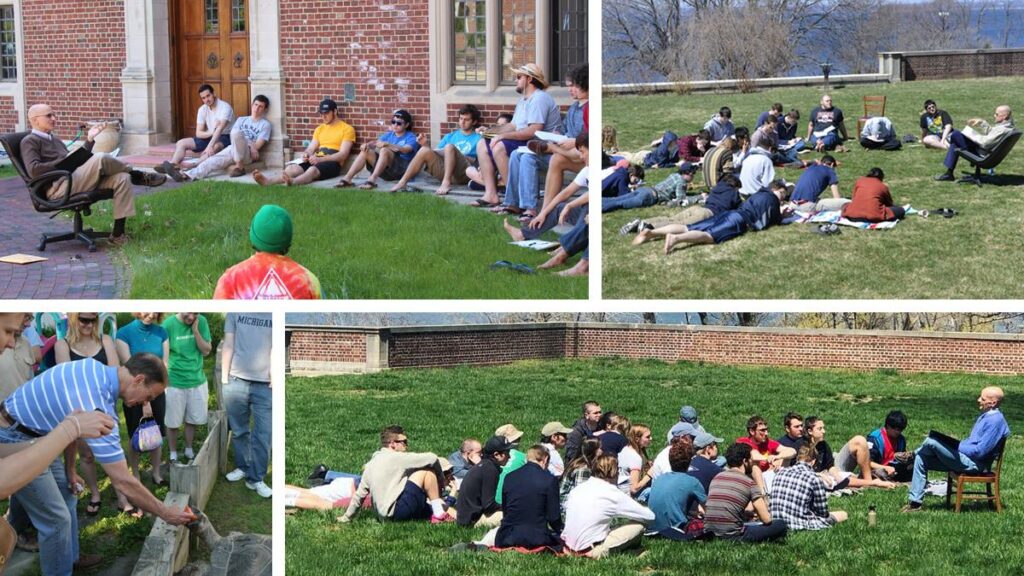
If You Can Design a Ship, You Can Record an Album
By Luke Herbermann ’21
When I came to Webb in the fall of 2017, I knew I would love my major and meet some great friends. I did not know that, in addition, I would find the time to record and produce my first musical album titled Take N One.
The story of the album begins before Webb, in my home state of Rhode Island. I started writing music in high school and formed a band with two friends. They were able to help me write supplemental parts to the songs I had already written for me and my guitar. Together we learned how to use proper equipment to record and produce music entirely by ourselves.
When I got to Webb, I thought I would have to put music on the back burner for a while. There is no doubt it was always second to academics, but it was not until recently when I looked back on my time at Webb that I realized how few sacrifices I was forced to make. Webb offered me convenient, yet formal, musical outlets with groups like the WooFS (Webb Family Singers) and the Webb jazz band. For our humanities elective, some of my classmates and I chose to take a music composition elective. It was in this course where I composed a “Study in Em,” the opening track to my album. In the fall of my sophomore year, I went abroad to the University of Southampton. While in England, I audited a class in songwriting and joined several music clubs to become a more polished guitar player. While doing my sea term aboard the M/V Yorktown Express, I recorded the ominous sound of crashing waves on the ship. This would be another track on my album.
Out of all of the places Webb has taken me to, the most important musical space for me has been the Webb auditorium. The auditorium is where I spend time writing music and reflecting on days both difficult and joyous. Webb has become embedded in my life and consequently in my music as well. In the fall of 2020, I managed to find a few spare minutes to set up equipment and focus on finishing recording some tunes. What ensued is a modest album that I am very proud of.
Listen to the album here:
A Message from President Michel to the Webb Family
Like so many of you, I am shocked and shaken by the horrific events that occurred in our nation’s capital on January 6th. It seems unfathomable — that a mob of U.S. citizens, incited by our own President, could desecrate the Capitol building with the intent of negating a legitimate election and thwarting the peaceful transition of power. Furthermore, the racist motives underpinning this attack on our democracy are egregious and disheartening.
We can take solace in the coming together of our Senators and Congressmen, demonstrated by their perseverance and resilience that evening as the electoral votes were counted and President-elect Biden’s election confirmed. Our Founding Fathers reminded us that a democracy is not an entitlement, that it is difficult to establish and easily lost. We have witnessed the fragility of our democracy this past week and now must work together in the continuous process of creating a “more perfect union”.
As educators, we have a responsibility to instill in our students the notion that democratic processes are the proper means for resolving differences. We have a duty to provide students with the experiences needed to become effective advocates for positive change and thereby stewards of our democracy. Our free society depends on these efforts.
These times are challenging but the future remains bright. Webb has long fostered a culture of respect and care for others. Let’s build upon these attributes and continue to make a difference.
With my best wishes,
R. Keith Michel
President, Webb Institute
Long Island-based Robert D.L. Gardiner Foundation partners with Webb Institute to enhance campus-wide access for disabled persons
Photo caption: Webb’s idyllic campus, with the Couch Academic Center in the foreground and Stevenson Taylor Hall in the background
Glen Cove, NY – On November 20, 2020, the Robert David Lion Gardiner (RDLG) Foundation awarded Webb Institute a $299,250 grant to support the construction and installation of an ADA compliant elevator in Webb’s flagship building, Stevenson Taylor Hall (STH, formerly a Pratt family vacation retreat), and an ADA compliant vertical platform lift linking the college’s newly constructed Couch Academic Center (CAC) to the historic STH. This grant was provided as a 1:1 match, whereby Webb Institute is responsible for the remaining funds to complete the project. Construction is scheduled to be completed by March 1, 2021.
Webb Institute is a small, top-ranked undergraduate engineering college located in Glen Cove, New York. Webb provides a full-tuition scholarship for all its students for all four years as they earn a BS degree in naval architecture and marine engineering. While the full-tuition scholarship assists students tremendously in affording a Webb education, many students and their families are challenged to pay for room and board and other expenses. This unmet need has been typically covered through student and parent loans. The RDLG Foundation previously (2018) provided Webb with a generous grant, that when combined with Webb’s existing scholarships, enabled Webb to meet the demonstrated financial need of all current and incoming Webb students. This successful scholarship program removed barriers of entry to Webb for underrepresented minority students and diversified Webb’s student body. Through this partnership, Webb also joined a list of approximately 70 colleges and universities in the United States that meet full demonstrated need.
“We are thrilled to extend our partnership with the Robert David Lion Gardiner Foundation through this important infrastructure enhancement,” said Webb President R. Keith Michel. “While both the Couch Academic Center and Stevenson Taylor Hall (STH) can be accessed from outside entrances separately, the current layout did not present a path for persons with disabilities to seamlessly maneuver between the college’s main buildings, and STH lacked an ADA compliant elevator. Thanks to our partnership with the RDLG Foundation and the vision of Webb’s Board of Trustees, we will enhance connectivity and seamless passage through two key buildings on Webb’s campus while we preserve the historical character of the Pratt mansion.
About Robert David Lion Gardiner Foundation:
The Robert David Lion Gardiner Foundation, established in 1987 primarily supports the study of New York State history, with an emphasis on Suffolk County. Robert David Lion Gardiner was, until his death in August 2004, the 16th Lord of the Manor of Gardiner’s Island. The Gardiner Family and their descendants have owned Gardiner’s Island since 1639, obtained as part of a royal grant from King Charles I of England. The Foundation is inspired by Robert David Lion Gardiner’s personal passion for New York history.
About Webb Institute:
Founded in 1889 by New York-based ship builder William H. Webb, Webb Institute is a top-ranked undergraduate institution specializing in Naval Architecture and Marine Engineering. Webb is the only full-tuition scholarship, private undergraduate program of its kind in the United States, with a maximum of 28 students being accepted into the program each year. Webb Institute’s beautiful, waterfront campus is located in Glen Cove, NY, on the North Shore of Long Island.
For additional information regarding this partnership, contact:
Anthony R. Zic
Director of Development
ude.bbew@ciza
516-641-6372
For general media inquiries, contact:
Kerri Allegretta
Director of Communications
ude.bbew@attergellak
516-403-5392
###
Webbies Preserving the Past: Steamship Restoration Project
by Ian Cosic ’21
On November 19, Webb seniors Ian Cosic and Cross Weeks had the unique opportunity to conduct an inclining experiment aboard the USCG Lilac. Constructed in 1933, the Lilac is the last steam-powered lighthouse tender in the United States. For the last 17 years, she has been maintained and exhibited to the public as a museum ship by the Lilac Preservation Project, a group of dedicated volunteers working to restore the vessel and preserve her rich history.
The experiment, conducted as part of their senior thesis, consisted of a calculated series of weight shifts across the deck of the vessel to induce an angle of heel. This was then measured with three different pendulums. Before the actual shifting of the weights, Ian and Cross explored every space on the Lilac to catalogue the weight and center of gravity of every moveable object aboard the vessel. Using the data from the experiment, the students will be able to determine the vessel’s current vertical center of gravity and assess her intact stability. They hope to assist the vessel’s owners in developing a plan to modify the Lilac for eventually carrying passengers. Their thesis advisor, Professor Bradley D.M. Golden ’99, was present to assist and to provide guidance on the experiments.

